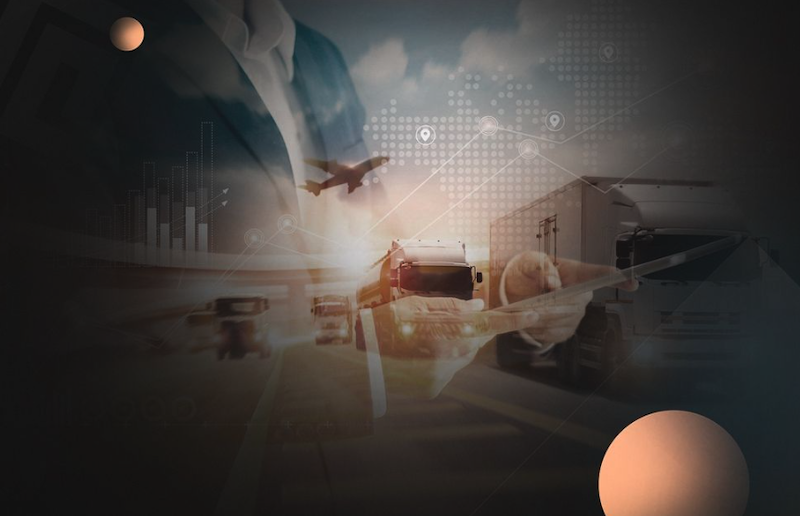Today, logistics and transportation industries are popular destinations around the world that allow all of us to get our orders quickly. Just imagine the way your small parcel ordered in the online store AliExpress from China travels.
Fast delivery of goods is mostly the merit of transportation companies that have managed to establish their transportation system well, which ensures high efficiency.
No one logistics company in the world will be able to provide the best conditions and demonstrate high efficiency without special technology programs. In 2024, tailored logistics software solutions perform many functions that are simply necessary for smooth operations.
An important nuance – mankind «pushes» technology forward at a rapid pace, so you should know what software for transportation and logistics companies is relevant today. This article will give you basic information about how specialized software makes logistics companies more efficient.
How Does Software Help Transportation and Logistics Companies Work More Efficiently Today?
It’s time to talk in detail about software for transportation and logistics companies. There are many options on the market today that can solve different tasks. We have collected the most common processes that modern software helps to perform.
Supply chain management. Logistics firms use supply chain management software to track inventory and shipment location and status in real-time. This enables them to avoid losses, plan better, and offer their customers the correct delivery period.
Roboticization of inventory. Another example of software’s influence is in warehouse robotics and automation. With the help of AI and other complex algorithms, AMRs can quickly identify and move items from shelves, pack and sort them properly, and reduce mistakes.
This increases efficiency by letting the human workers do the more challenging work while machines handle more of the routine labor.
Route planning systems. Route planning systems connected to traffic data and machine learning are also helping transportation companies optimize their operations. Intelligent routing software reduces fuel costs, reduces transit time, and enables logistics firms to service more customers with fewer vehicles.
Surprisingly, you don’t need to purchase each program separately to perform all of the above tasks. TMS solutions for logistics companies provide extensive functionality, including assistance in managing shipments, warehouse inventory, route development, order tracking and much more.
Examples of Using Software by Transportation and Logistics Companies
Transport and logistics firms have heavily invested in software to facilitate supply chain management involving multiple countries in order to meet orders on time. With the expansion of e-commerce and the increasing demand from customers, technology remains a more significant factor than ever for these firms.
There are several companies that have incorporated software solutions in their leadership, which can be discussed below.
1. Amazon
Let us consider the example of the online retail giant Amazon. Amazon’s specific operations, technologies, and software applications in the warehouses and fulfillment centers are central to the company’s business lines and activities in several ways.
These automated systems enable Amazon to process huge orders rapidly, plan deliveries, and optimize workflows in the gargantuan supply chain. Without these software innovations, it will be hard for Amazon to meet the delivery speed and reliability that set them apart from other competitors.
2. DHL
DHL has also applied a special software called Resilience360. This solution gives real-time insight into the company’s supply chain networks across the globe, including the major suppliers and airport hubs.
It then alerts DHL to potential risks that can affect the smooth supply of goods to the end user hence enabling it to control its supply chain risks. It’s not the only software that DHL Transportation uses to improve operational efficiency.
3. FedEx
Also, tracking and routing software are meaningful to managing FedEx’s shipments, which is a shipping company. For example, their SenseAware system incorporates sensors and algorithms for enhanced tracking of sensitive goods such as drugs and other inflammable products.
This enables FedEx to have a real time view of specific conditions such as temperature and location in order to avert intermission.
Forecasts for the Future of Innovation Implementation in the Sphere of Logistics
Continuity and development of logistics can and should rely on the use of advanced technologies such as artificial intelligence. Many of you are already well aware of how smart systems help in other areas of life by doing large volumes of work for people.
AI and machine learning software will allow firms to determine optimal delivery routes and trends in supply and demand and automate warehouses for maximum productivity. Fully autonomous vehicles will revolutionize the way trucks ship goods, and drone delivery may change everything.
The firms that will implement these emerging technologies early will be in a better position than their competitors. However, the personnel factor will continue to be essential for the integration of highly efficient technical systems into logistics’ context, which by its nature is focused on people.
[ad_2]
Source link




